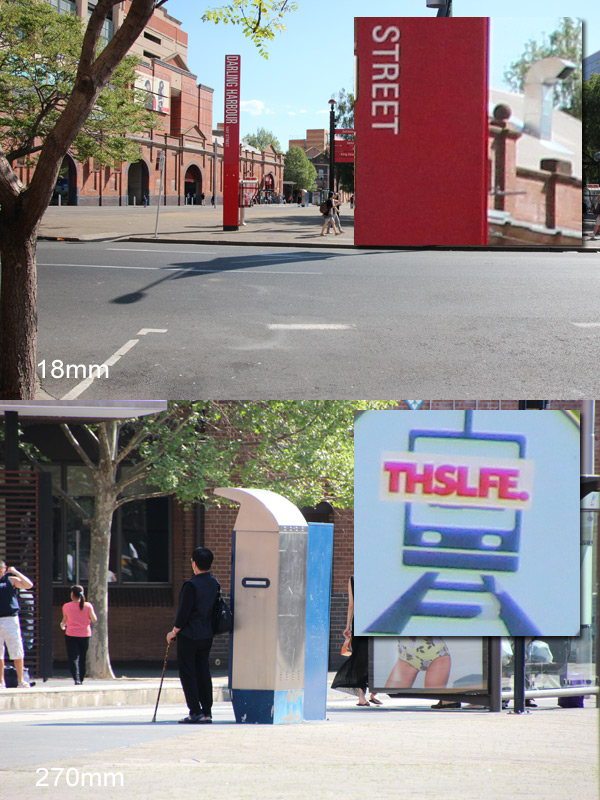 Why You Can Trust CNET
Why You Can Trust CNET Tamron 18-270mm f/3.5-6.3 Di II VC PZD review: Tamron 18-270mm f/3.5-6.3 Di II VC PZD
The Tamron 18-270mm offers good value for money, considering it covers such a wide range of focal lengths in one lens.
This compact 18-270mm lens from Tamron offers a 15x equivalent zoom reach, ideal for use as an all-in-one lens. Don't fancy changing lenses constantly when travelling? This could be for you.
The Good
The Bad
The Bottom Line
Design and features
Differentiating itself from previous Tamron lenses such as the existing 18-270mm, this lens uses the Piezo Drive motor for quick autofocusing performance. The lens has a lock on the barrel to help prevent lens creep (which does happen with this model if it's not locked in place) as well as a flower lens hood provided in the box. There's a pinch-to-remove lens cap and the filter thread is 62mm.

A visual demonstration of the focal length extremes on the 18-270mm. 100 per cent crops inset.
(Credit: CBSi)
Along with the standard AF/MF and image stabilisation switches on the lens barrel, the zoom ring is coated in a ridged plastic, so too is the focus ring at the front. On our test camera, the Canon EOS 600D, the lens balanced well on the body, with a very similar feel to the 18-135mm lens from Canon that is a kit option on the 600D. This lens is designed for crop sensor cameras such as the 600D and comes in Nikon, Canon and Sony mounts.
A comparison showing how compact the Tamron lens is compared to a Canon 18-135mm lens.
(Credit: CBSi)
Performance and image quality
Like any wide-angle to telephoto zoom this lens does display some barrel distortion at its widest end, evening out through the mid-range focal length.
There is a fair amount of softening on images taken at the telephoto end, noticeable when reviewing them at full magnification. There's also some chromatic aberration issues to be aware of, particularly at the telephoto end. The autofocus motor, while reasonably quick in good light, does sound quite loud compared to equivalent Canon lenses.
A comparison between the Canon 18-135mm lens and the 18-270mm from Tamron. Though they do not cover the same focal length at the telephoto end, they are of comparable size and from the 100 per cent crops inset, have very similar image quality.
(Credit: CBSi)
Another loud element to the Tamron is the image stabilisation system, which has an audible hum that can be heard during video recording if it's left activated. If you want to record video with this lens, you'll need to turn image stabilisation (or VC as it's labelled on the lens) off and use a tripod. That said, the image stabilisation is reasonably effective, particularly at the telephoto reach, allowing you to get a shake-free shot at shutter speeds above 1/50.
Image samples
Click each image for a full resolution JPEG from the 600D, taken with the Tamron lens.
Conclusion
The Tamron 18-270mm offers good value for money, considering it covers such a wide range of focal lengths in one lens. Photographers will need to consider the trade-offs for the low price compared to camera brand lenses from Canon and Nikon, which include soft images at full magnification as well as loud autofocus and image stabilisation.


